
Good morning. It’s Monday, Feb. 13.
- Soaring home prices are making Lake Tahoe unlivable.
- Sex abuse lawsuits could bankrupt San Diego diocese.
- And an interview with curmudgeonly icon Harrison Ford.
Statewide
1.
A groundbreaking new analysis of California data revealed that the richest mothers and their newborns are the most likely to survive the year after childbirth — except when the family is Black. Other findings:
- For every 100,000 births, 350 babies born to the poorest white mothers die, while 437 babies born to the richest Black mothers die.
- The poorest Asian American families and the richest white families have similar infant mortality rates.
- California is a best-case scenario for prenatal care in the U.S. Yet Swedish women have healthier babies at every income level. N.Y. Times
2.
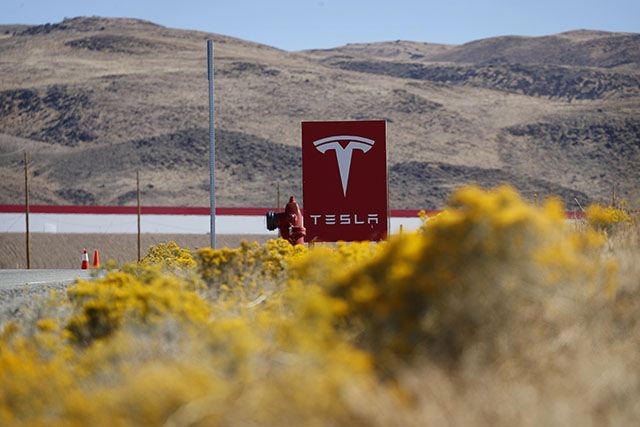
In the last decade, tech companies have poured into the Reno area, drawn in part by massive tax breaks. Californians have tried to recreate their old lifestyles, moving into luxury apartments clustered around shopping areas with high-end fitness centers and In-N-Outs. Now the hangover has come. “Streets in northern Nevada are becoming congested; city services, strained. Locals are getting priced out of houses and apartments by Californians who can pay higher rents or drop larger down payments,” the L.A. Times wrote.
3.
In 2006, Luke Scarmazzo, of Modesto, openly operated a marijuana dispensary, permissible under California law. But the 26-year-old got the attention of the Drug Enforcement Administration when he made a rap video that showed him counting stacks of money and flipping off federal agents. Convicted on marijuana charges and running a “criminal enterprise,” he served 14 years in federal prison until his release earlier this month. His daughter, 5 years old when he went to prison, is now 20. He’s 42. S.F. Chronicle
4.
“In the past five years, nearly 25,000 homes and other buildings across the state have been destroyed by massive fires, with tens of thousands more badly damaged. Thirteen of the 20 largest wildfires in California history have occurred over that time.”
The reporter Scott Wilson detailed California’s “gentrification by fire” — how intensifying wildfires are exacerbating housing inequality because only well-off homeowners can afford to rebuild. Washington Post
5.
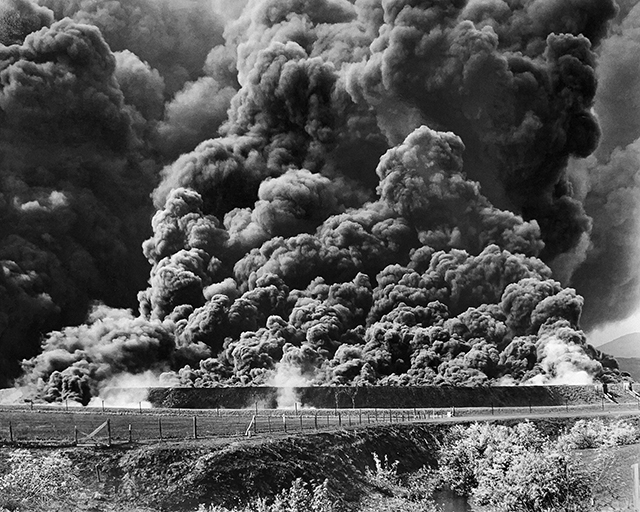
Santa Maria Valley, a region of rolling vineyards along the Central Coast, got a star turn in the 2004 movie “Sideways.” A new photography project by Brett Kallusky focuses on another side of the valley: the scarred landscapes and industrial waste associated with big agriculture. Asked if his work is antifarming, Kallusky said agriculture is necessary: “But how it is being done needs to be absorbed, and hopefully evaluated.” Lenscratch | Analog Forever
See 47 images from Kallusky’s “Landfill.” 👉 BrettKallusky.com
Northern California
6.
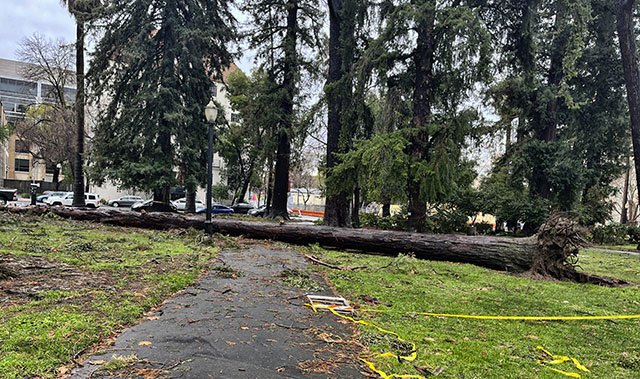
During the powerful storms of December and January, more than 1,500 trees collapsed in Sacramento, a city celebrated for its dense urban canopy. Kevin Hocker, Sacramento’s urban forester, said it takes a lot to surprise him. “And as it started getting going, it was clear that this was something new,” he said. “This was something like we’ve never seen.” Here’s an impressive visualization of the damage in California’s “City of Trees.” 👉 Sacramento Bee
7.
In late 2019, state officials hailed the launch of an electric-car share program in Cantua Creek, an impoverished farmworker town in the San Joaquin Valley located 20 miles away from the nearest big-box store and 30 miles from the closest hospital. It was life-changing. Suddenly, residents were able to easily get to doctor’s appointments and grocery stores. Then the cars abruptly vanished, a precaution against the spreading coronavirus. They never returned. Sacramento Bee
8.
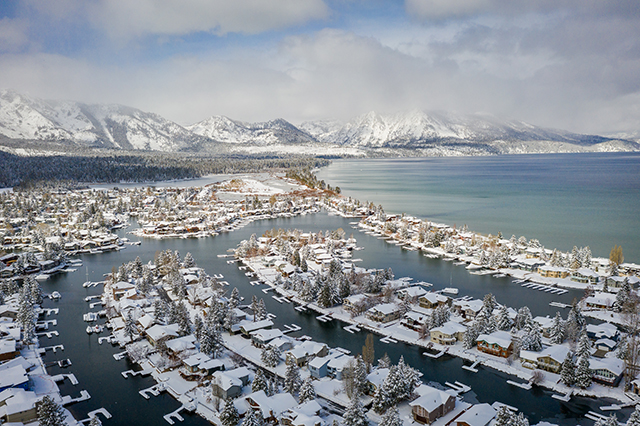
Between 2012 and 2021, median home prices grew from $345,000 to $950,000 in the Lake Tahoe basin as the number of housing units increased by 1%. That’s created an all-but-impossible situation for a destination that attracts about 15 million visitors every year. The teachers, restaurant staff, police officers, and firefighters that keep the community running can no longer afford to live there. The reporter Dani Anguiano explored “how a resort town became unlivable.” The Guardian
9.
When Gwendolyn Westbrook worked at the Port of San Francisco, she was convicted of stealing public money. Later, as head of a homeless nonprofit, she was accused of standing by as her organization illegally sold housing access to the homeless. Now a lawsuit has accused Westbrook of using her group’s funds to support a “lavish” lifestyle, including cars, expensive jewelry, and a vacation in Aruba. Westbrook, who is Black, said she’s being targeted because of her race. S.F. Chronicle | SF Standard
Southern California
10.
The Roman Catholic Diocese of San Diego said it may declare bankruptcy as it faces the “staggering legal costs” of roughly 400 lawsuits alleging sexual abuse of children going as far back as 1945. A 2020 state law temporarily lifted the statute of limitations for claims of childhood sexual abuse no matter how old. Critics portrayed the San Diego diocese’s bankruptcy move as a ruse. Irwin Zalkin, a lawyer for plaintiffs, said he planned to file a lawsuit accusing church leaders of hiding assets. NBC 7 San Diego | S.D. Union-Tribune
11.

Harrison Ford, 80, sat down for an interview and it was as delightful as you could hope:
- On whether he’s had plastic surgery: “That’d be a ‘no.’ Where should I go?”
- On philosophy: “There’s a Protestant theologian named Paul Tillich who wrote that if you have trouble with the word ‘God,’ take whatever is central and most meaningful to your life and call that God.”
- On his reputation for being shy: “I don’t have a social anxiety disorder. I have an abhorrence of boring situations.” Hollywood Reporter
California archive
12.
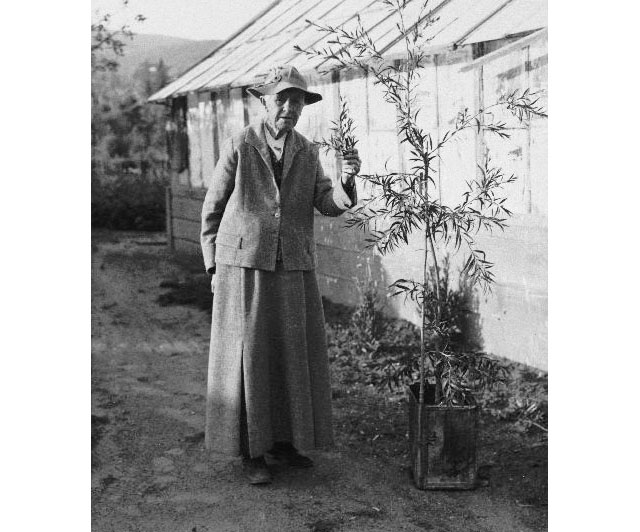
☝️ If you spot a large tree in San Diego’s Balboa Park, there’s a good chance it was planted by this woman.
The pioneer botanist Kate Sessions finalized a deal with San Diego on this week in 1892 to lease a plot of city parkland for a nursery. In exchange, she agreed to plant 100 trees a year in the park, and donated many more for planting around the city. Thanks in no small part to her efforts, Balboa Park became San Diego’s centerpiece, a 1,200-acre horticulture oasis created out of a scrub-filled mesa.
In a 1995 profile in San Diego Reader, people who knew Sessions recalled her as a lonely figure who was wholly consumed by her love of plants. She worked 12-hour days, taking only two vacations in 60 years. When it grew too dark to garden, she would read botany books in her home office, lamp light illuminating her face. Her uniform: a twill skirt, felt hat pulled low, and men’s boots that she would use to kick marks in the dirt for plantings.
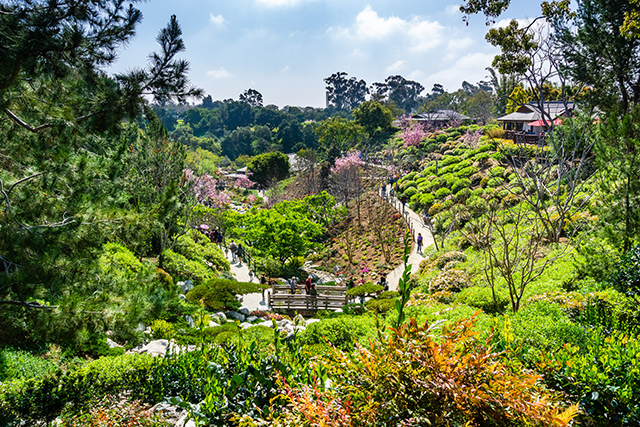
Private feelings, Sessions once said, were “a waste of time.”
While she maintained a network of friends, Sessions never married, rejecting at least two proposals, and had no children. In a letter to a friend, she said her flowers were her children — the banana palms, twisted junipers, jacarandas, and bougainvillea vines that brought her world to life.
In the fall of 1939, a fall in the garden put Sessions in the hospital. Among her final acts was to summon San Diego’s city planner to her deathbed so she could tell him what ought to be planted alongside a proposed stretch of freeway. She died at 82.
The local historian Clare Crane was asked during a 1978 KPBS radio program to sum up Sessions’ place in the story of San Diego. She recalled seeing a plaque during a trip to Florence that described the city itself as a memorial to Michelangelo. The same is true of Sessions, she said: “If you would see her memorial look around you.”
Clarification
An earlier version of this newsletter incorrectly implied that the 5 Freeway already existed in the 1930s. It was opened in stages starting in the 1950s.
Thanks for reading!
The California Sun is written by Mike McPhate, a former California correspondent for the New York Times.
Make a one-time contribution to the California Sun.
Give the gift of the Sun.
Forward this email to a friend.
Click here to stop delivery, and here to update your billing information or cancel your support.
The California Sun, PO Box 6868, Los Osos, CA 93412
Wake up to must-read news from around the Golden State delivered to your inbox each morning.
